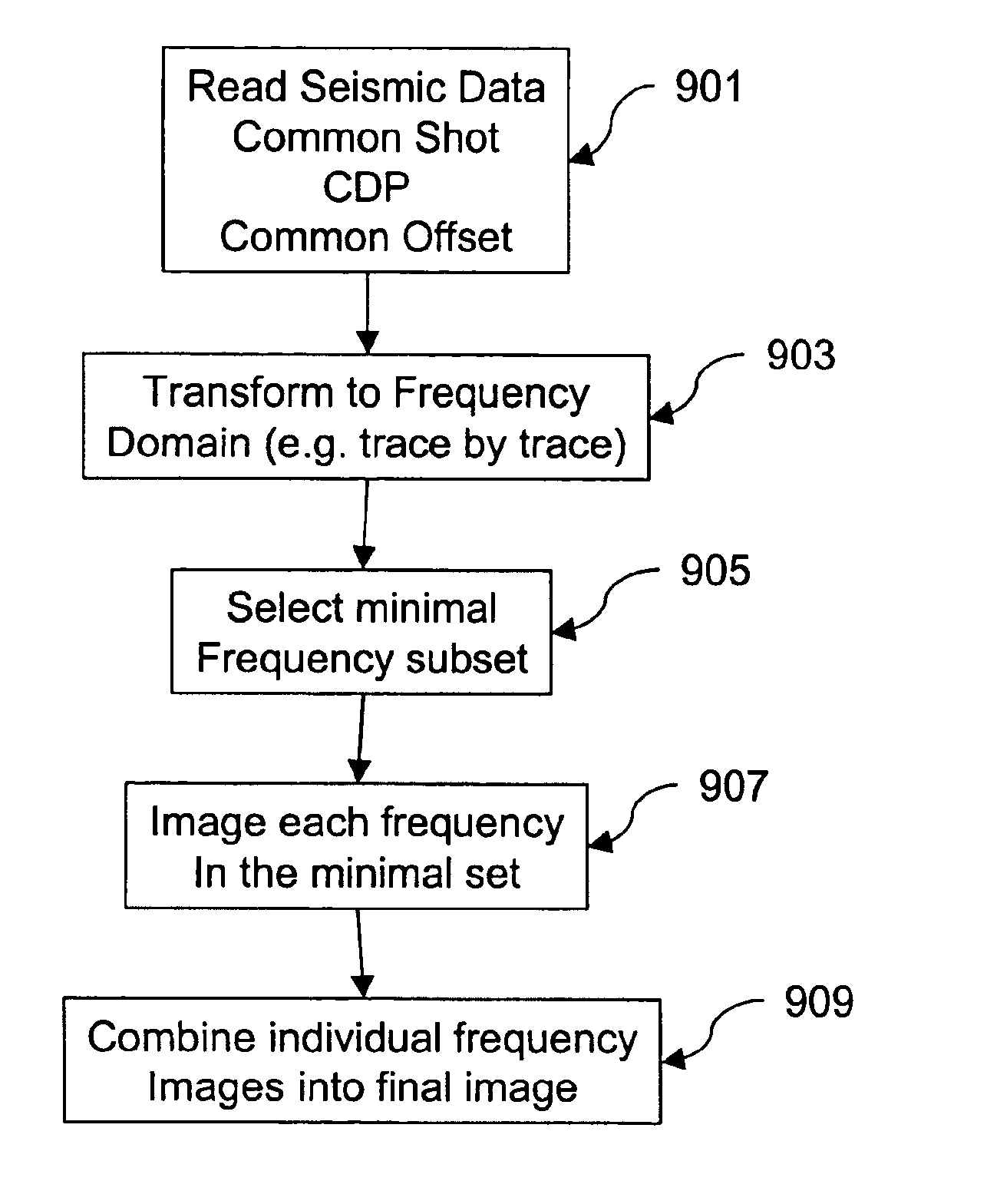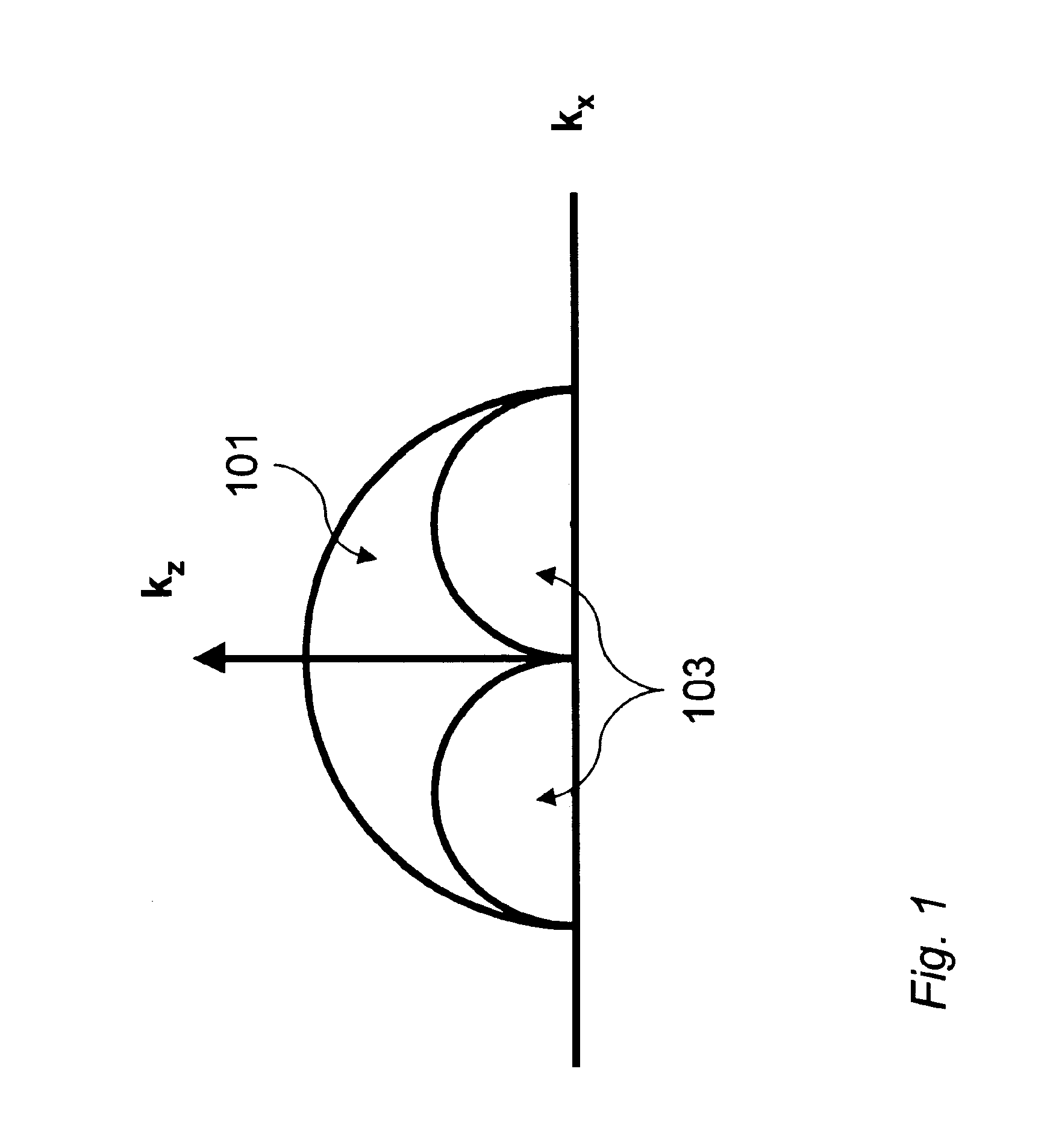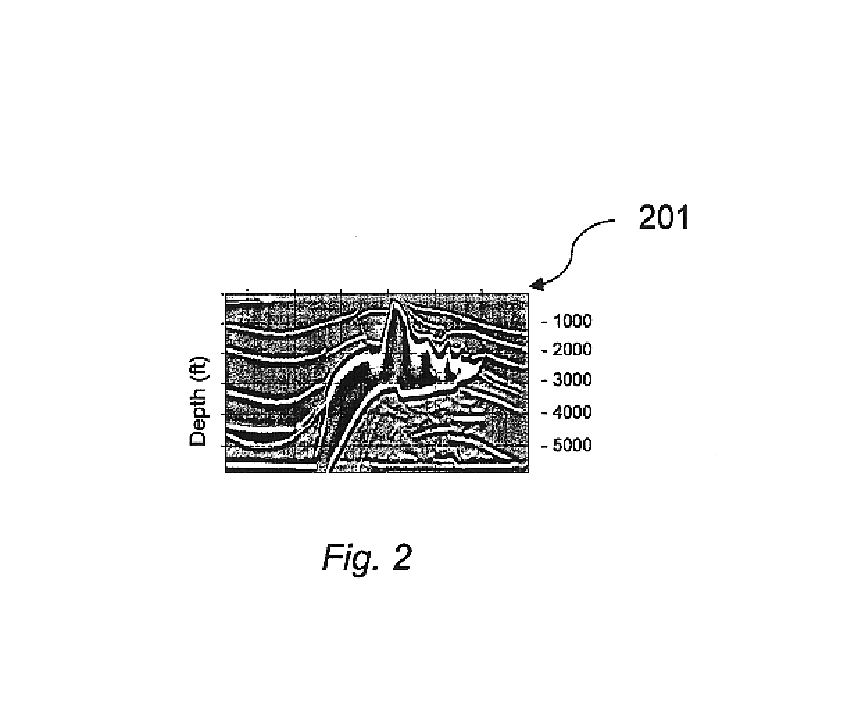Method and system for limited frequency seismic imaging
a limited frequency and seismic imaging technology, applied in the field of limited frequency seismic imaging, can solve the problems of large computation costs for three-dimensional geophysical data processing and/or modeling, affecting data processing considerations, analysis time and cost, etc., and achieve the effect of reducing computation resources
- Summary
- Abstract
- Description
- Claims
- Application Information
AI Technical Summary
Benefits of technology
Problems solved by technology
Method used
Image
Examples
Embodiment Construction
Zero-offset-migration / inversion of single frequency data produces a subsurface image with spatial wavenumbers confined to an Ewald sphere defined by a simple dispersion relation. For non-zero-offset, the Ewald sphere becomes an Ewald doughnut. A single frequency images a wavenumber volume rather than just a spherical shell. This fact can be exploited to substantially reduce the number of frequencies needed to accurately map subsurface reflectors. This invention provides a method and apparatus for calculating a sparse set of frequencies for use in frequency-slice migration algorithms. The migration process remains the same, but the smaller set of frequencies results in an algorithm an order of magnitude faster than more traditional implementations. A small collection of case studies compares the limited frequency approach to traditional methods. Finally, we discuss various strategies for parallel implementation in distributed computational environments.
The standard approach to freque...
PUM
 Login to View More
Login to View More Abstract
Description
Claims
Application Information
 Login to View More
Login to View More - R&D
- Intellectual Property
- Life Sciences
- Materials
- Tech Scout
- Unparalleled Data Quality
- Higher Quality Content
- 60% Fewer Hallucinations
Browse by: Latest US Patents, China's latest patents, Technical Efficacy Thesaurus, Application Domain, Technology Topic, Popular Technical Reports.
© 2025 PatSnap. All rights reserved.Legal|Privacy policy|Modern Slavery Act Transparency Statement|Sitemap|About US| Contact US: help@patsnap.com



